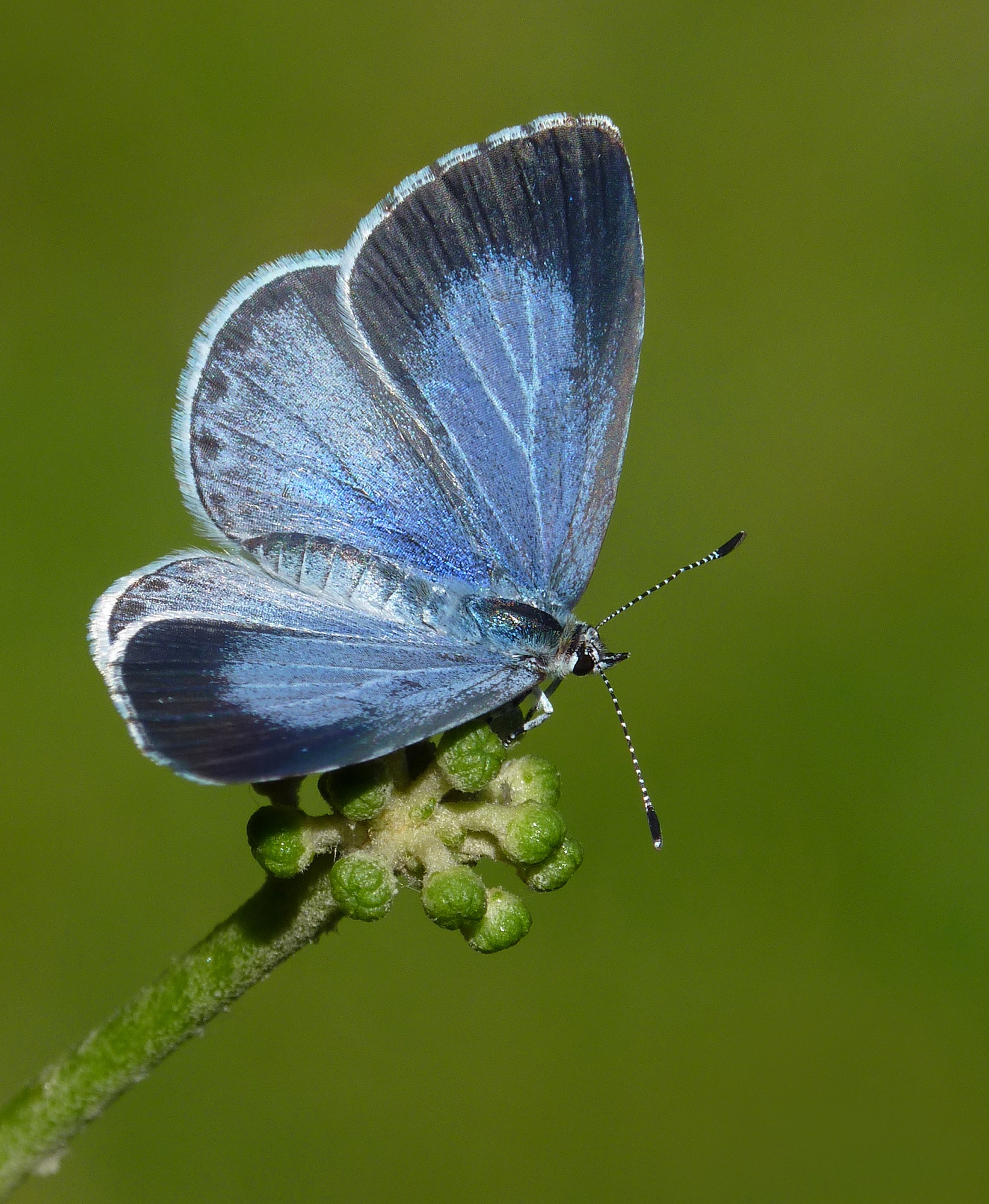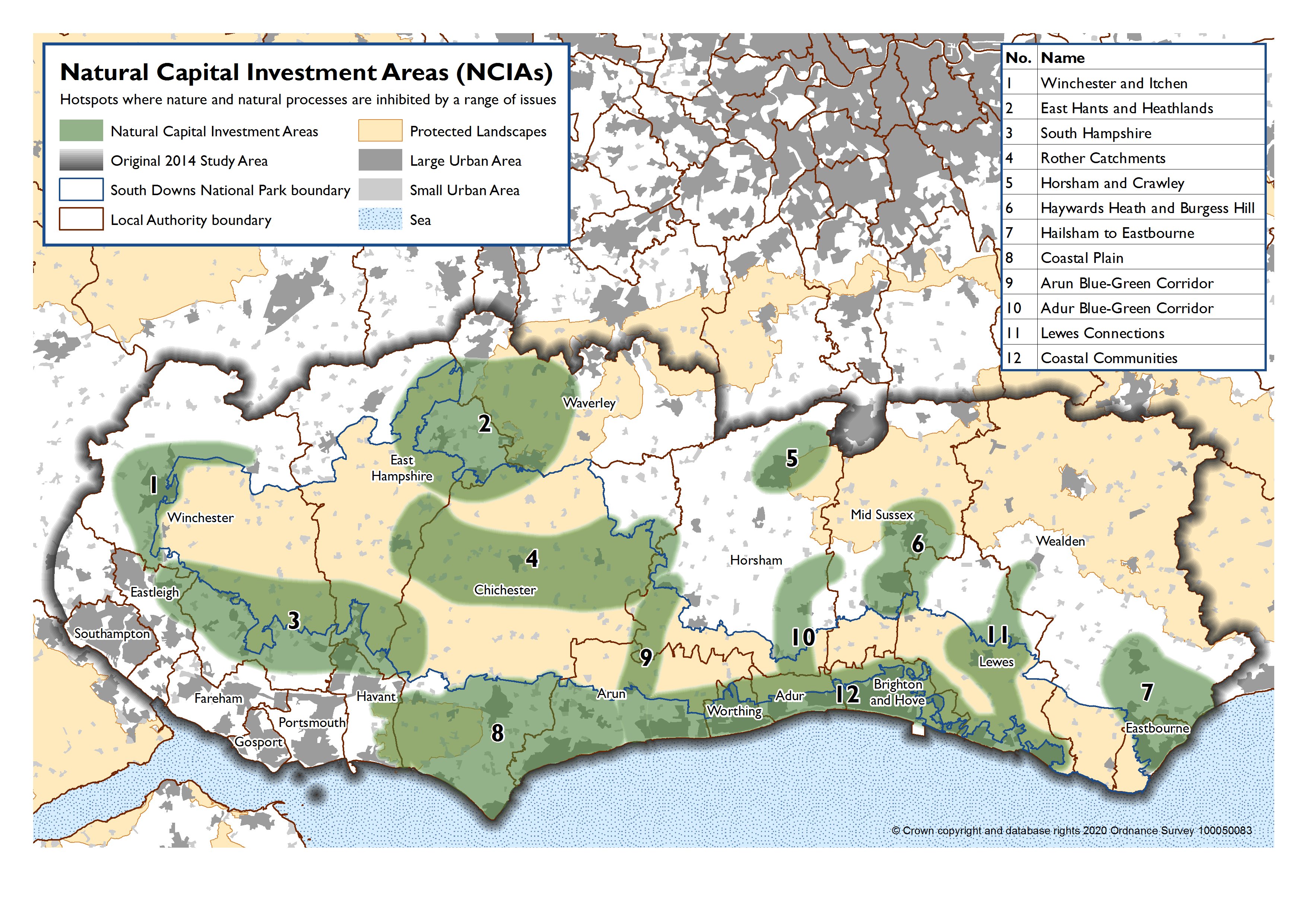South Downs National Park launches major plan for nature recovery across South East
August 13, 2020
An ambitious vision to help boost nature and drive a green economic recovery has been unveiled today by the South Downs National Park Authority and partners.
The bold strategy, covering the South East region, aims to create a connected network of “green infrastructure” that makes havens for wildlife, supports local economies, helps to mitigate climate change and gives local people all the health and well-being benefits of a better natural environment.
Twelve areas across the region – primarily on the edge or beyond the National Park’s boundaries – have been identified as key areas for long-term investment in more green infrastructure (see map below). The term “green infrastructure” embraces the network of natural and semi-natural features, spaces and water courses that can be managed to deliver wide-ranging benefits for people and wildlife. It can include parks, gardens, rivers and streams, roadside verges, street trees, hedgerows, churchyards, allotments and nature reserves as well as wider green spaces.
 The detailed masterplan, called The People and Nature Network (PANN), has been produced in partnership with a range of organisations, including dozens of local authorities across Hampshire and Sussex, the RSPB, Wildlife Trusts, The Woodland Trust, English Heritage and the Environment Agency.
The detailed masterplan, called The People and Nature Network (PANN), has been produced in partnership with a range of organisations, including dozens of local authorities across Hampshire and Sussex, the RSPB, Wildlife Trusts, The Woodland Trust, English Heritage and the Environment Agency.
Andrew Lee, Director of Countryside Policy and Management for the South Downs National Park Authority, explained: “The ethos behind this ambitious strategy is that nature is working invisibly, every day, to keep our environment healthy for both wildlife and people. Nature provides us with clean water, fresh air, food to eat, and tranquil places to enjoy with our families. Yet we can never take it for granted as our natural environment is sadly under threat from climate change and global biodiversity decline, together with the fact that we’re living in one of the most crowded parts of the UK.
“Nature doesn’t recognise administrative boundaries and that’s why the People and Nature Network is such a vital piece of work – laying out our collective long-term ambition, at both a regional and national level, to promote more green infrastructure. That could be creating a wildflower meadow in an urban area, improving the greenery along a canal, laying a hedgerow or planting more street trees.
“Every bit of this interconnected green network plays its part in supporting wildlife and also our communities, whether that be through boosting the tourism economy or just being an uplifting space for people to enjoy the natural world.
“We have this amazing natural space in the National Park, but its benefits don’t stop at the designation boundary. This plan aims to make space for nature in urban as well as rural environments and create links with the National Park which already has over 1,000 nature conservation areas.”
PANN ties in with the Government’s 25-year Environment Plan, which sets out a number of targets, including clean air and water, thriving plants and wildlife, and adapting to climate change.
PANN also recognises that creating a healthier natural environment will also bring economic benefits for the region, including reducing financial burden on health and social care, increasing visitor spending and increased desirability as a location for business.
The partnership will work towards its goals through a number of avenues, including encouraging green infrastructure in emerging planning policy, seeking more local and national funding and developing more community projects that help the environment.
 Ian Phillips, Chair of the South Downs National Park Authority, said: “This bold plan lays a strong foundation for nature recovery across the South East, recognising that a co-ordinated approach is required in the years ahead.
Ian Phillips, Chair of the South Downs National Park Authority, said: “This bold plan lays a strong foundation for nature recovery across the South East, recognising that a co-ordinated approach is required in the years ahead.
“The need for action is clear and the South Downs National Park Authority, as a major environmental and planning stakeholder across three counties, has a key role to play in showing leadership.
“The COVID-19 pandemic has seen people from all areas re-connect with nature, giving many a new appreciation of how just valuable it is to our health and wellbeing. Now is the time to make the most of this renewed enthusiasm and start creating a better future for both people and nature. This is the start of that journey and together we can make a difference.”
The People and Nature Network report can be read here: https://www.southdowns.gov.uk/national-park-authority/our-work/partnership-management/people-and-nature-network-pann/
- The report identifies 12 Natural Capital Investment Areas where more resources are needed to help nature and support more green infrastructure. Each of these areas has a unique set of environmental challenges and each area will require a bespoke approach. Improving green infrastructure in these areas will also help promote wildlife connectivity between protected landscapes, such as the Surrey Hills, High Weald and Chichester Harbour Areas of Outstanding Natural Beauty (AONB). Over time as the research and evidence is extended it is likely that further NCIAs will be identified. They are currently as shown on the map:

- In developing this Network the SDNPA has worked closely with members of the Sussex, Surrey and Hampshire Local Nature Partnerships.
- The SDNPA would like to thank all the organisations for their contributions towards developing the network, including:
- Adur and Worthing Councils
- Arun and Rother Rivers Trust
- Arun District Council
- Basingstoke and Deane Borough Council
- Brighton and Hove City Council
- British Horse Society
- Chichester District Council
- East Hampshire District Council
- Eastbourne Borough Council
- English Heritage
- Environment Agency
- East Sussex County Council
- Fareham Borough Council
- Forestry Commission
- Gosport Borough Council
- Hampshire County Council
- Hampshire & Isle of Wight Wildlife Trust
- Hart District Council
- Havant Borough Council
- Hampshire County Council
- Wealden District Council
- Horsham District Council
- Lewes District Council
- Mid Sussex District Council
- National Trust
- Natural England
- Portsmouth City Council
- RSPB
- South Downs Local Access Forum
- Southampton City Council
- Surrey Wildlife Trust
- Sussex Community Development Association
- Sussex Wildlife Trust
- Test and ltchen Catchment
- Test Valley Borough Council
- UCL
- Waverley Borough Council
- Wealden District Council
- Winchester City Council
- Woodland Trust
- West Sussex County Council
